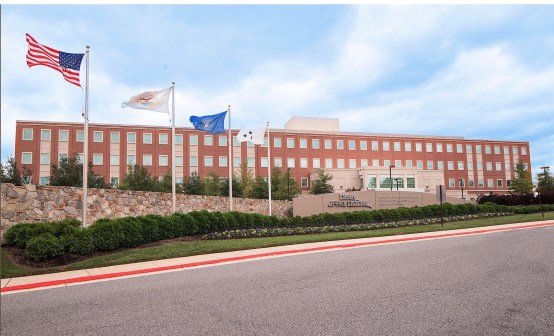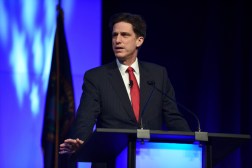Pentagon IT services consolidation nearing full operation

The Pentagon could be less than six months away from completing the consolidation of IT services for its Washington, D.C.-area offices, the “toughest” change management project underway in the department, the general in charge said Thursday.
Officials are working to merge the two separate IT units that serve Defense Department facilities across the national capital region into the Defense Information Systems Agency’s Joint Service Provider, a transition that will conclude when senior DOD IT officials designate the program with full operational capability.
Brig. Gen. Brian Dravis, DISA’s director of the JSP, told AFCEA’s Army IT Day he’ll likely recommend to DOD Deputy CIO Dave DeVries in the next six months that full operational capability has been attained.
“I’ll be able to, I think, give Mr. DeVries a recommendation, maybe in the next six months, that says, ‘Sir, I think we’ve matured this organization enough that you can make a decision of if you want to declare [full operational capability] or not,” Dravis said at the event in Tysons Corner, Virginia.
The JSP, which has also been referred to in the past as the Joint Information Technology Service Provider-Pentagon, reached its initial operational capability in July 2015. The program is in the process of consolidating the common services provided by the Army’s Information Technology Agency and DOD’s Washington Headquarters Services’ Enterprise Information Technology Services Directorate into a unified shared delivery unit housed by DISA, driving efficiencies, reducing duplication and saving money.
“We were directed to take the two core IT organization inside the Pentagon … and push them together. That’s what we did, and it was about as hard as you could imagine,” he said.
Dravis continued: “We will have done all the work planning those changes and other things needed to say, ‘OK, we’re out of our [initial operational capability] phase,’ which we just entered in July of 2015, eight months ago, and in about 12 month’s time, we will have matured it to the point to be considered full operational capability.”
Typically for such projects, he added, it can take up to a year to get to initial operational capability, and as many as three years to move on to full operation.
In terms of return on initial investments, Dravis said so far things have been great — particularly the savings. In fiscal year 2015, which had about two months left when JSP got its initial operational capability, the program ran at about 500 percent of its savings target of $580,000, according to a memo from DOD Deputy Secretary Bob Work last July. Those numbers tapered off “by about 200 percent or so” so far in fiscal year 2016, Dravis said; but even so, JSP met its savings goal of $14.6 million for the year by the start of the second quarter.
And those savings have come without being really “Draconian about it,” Dravis said.
“We’ve taken what I believe are common-sensical approaches to looking at areas of relatively easy consolidation and started consolidating,” he said.
JSP has also reduced the aggregate number of contracts between the merged organizations — which were in the hundreds, he said — by 20 percent.
That all didn’t come without challenges, though, Dravis admitted. Culture and organizational integration — that is, bringing people together to create a new organization when they’re physically displaced — were two major roadblocks in the unification effort.
“We’re all over the [national capital region],” he said. “We have people in buildings all over the place. Its very hard to have a unity of effort, a unity of command, when you’re dispersed all over the place.”
Dravis added, “We’ve got to get everybody going in one central direction — let’s all head north, and we’ll be fine from there.” He said he was able to do so with a short list of specific priorities for the current fiscal year, like focusing on the departmentwide order to move to Windows 10, and building out Wi-Fi at the Pentagon and other installations.
All-in-all, it’s one incredible lift, Dravis said. “In my view, the JSP reflects the heaviest, toughest change management project happening in the Pentagon today.”






